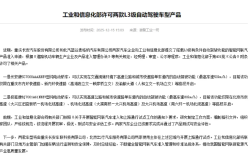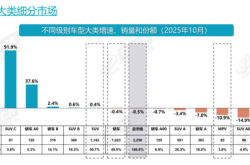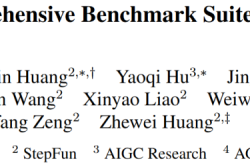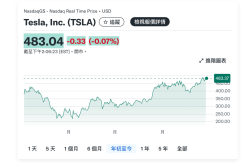NVIDIA Unveils Jetson Thor: The New Brain for Robots, Sparking Industry Excitement
![]() 08/26 2025
08/26 2025
![]() 678
678

Industry leaders not only sell products but also set benchmarks and cultivate ecosystems, attracting third-party developers and service providers to develop complementary solutions, thereby fostering a robust synergy. Prominent examples include Microsoft's Windows operating system and Apple's App Store.
Editor: Di Xintong
With NVIDIA's latest robot computing platform, Jetson Thor, humanoid robots might finally utter, "I understand now."
After much anticipation, NVIDIA has unveiled its groundbreaking brain for humanoid robots, boasting a 7.5x boost in AI performance and a computing power of 2070 TFLOPS. These remarkable achievements have led many to hail this as the "iPhone moment" for humanoid robots.
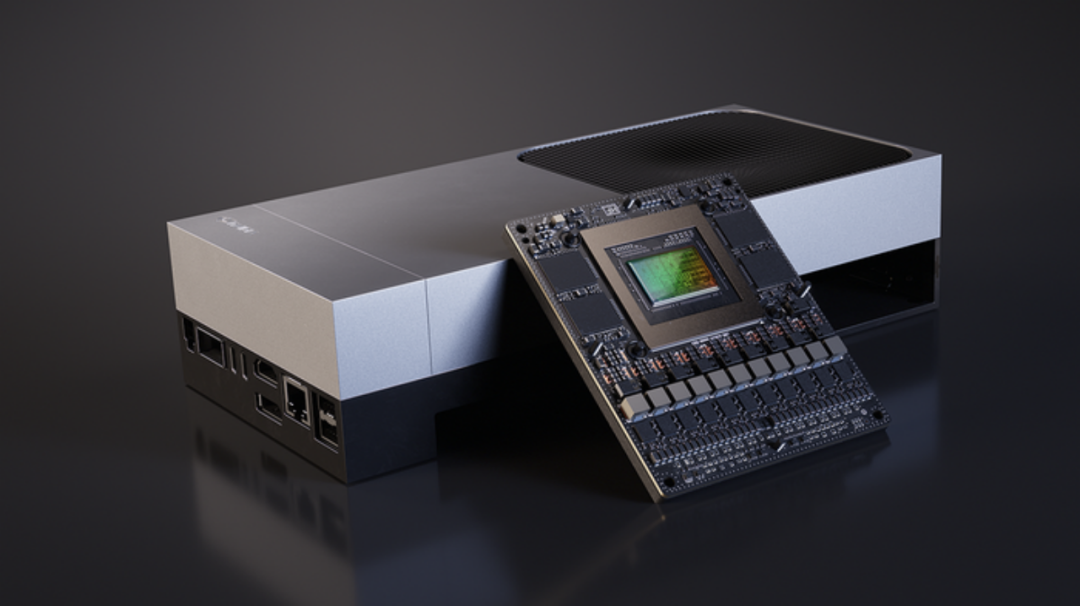
Image source: NVIDIA
Setting aside the specific figures, the end result is that NVIDIA's new brain, Jetson Thor, has transcended physical intelligence. Humanoid robots can now predict the consequences of their actions through generative reasoning and execute complex tasks. In simpler terms, they comprehend the physical world and workflows, knowing the next step when given tools and materials.
Beyond understanding, reasoning, and autonomous work, this brain also ensures smoother and unhindered operation of humanoid robots. Wang He, CTO of Galaxy General, revealed that their G1 Premium robot significantly improved in movement speed and fluidity after adopting Thor.
Embodied Learning has witnessed firsthand the "drifting" skills of robots equipped with Thor, moving at speeds akin to fast-forwarding. When carrying boxes, they can accurately pinpoint the box's position even after moving, despite potential interference.
This marks a pivotal moment in the "enlightenment" of humanoid robots.
NVIDIA's proactive stance in embodied intelligence aligns with Jen-Hsun Huang's optimism about the future of physical AI and NVIDIA's role as an industry leader. It also taps into another significant trend: major companies racing to equip robots with brains.
Whether it's Tencent's universal external brain under the banner of "not touching hardware" or JD.com's efforts to empower robots with "conversation" capabilities, major companies are implicitly targeting brains. These moves are strategic, aiming to complement industry shortcomings and defensively avoid large-scale investment risks.
Perhaps the championship in this "brain power competition" among humanoid robots is already reserved for major companies.
NVIDIA's Both-And Approach
Let's delve into some technical details to understand how NVIDIA aims to achieve both hardware performance advantages and software systemic upgrades.
Jetson Thor, specifically designed for generative reasoning models, is based on the latest Blackwell GPU architecture, offering up to 2070 FP4 TFLOPS of computing performance—a 7.5x improvement over the previous generation Jetson Orin. It also boasts a 3.1x increase in CPU performance, a 3.5x boost in energy efficiency, and a doubling of memory capacity. Compared to a decade ago, AI performance has soared by up to 7000 times.
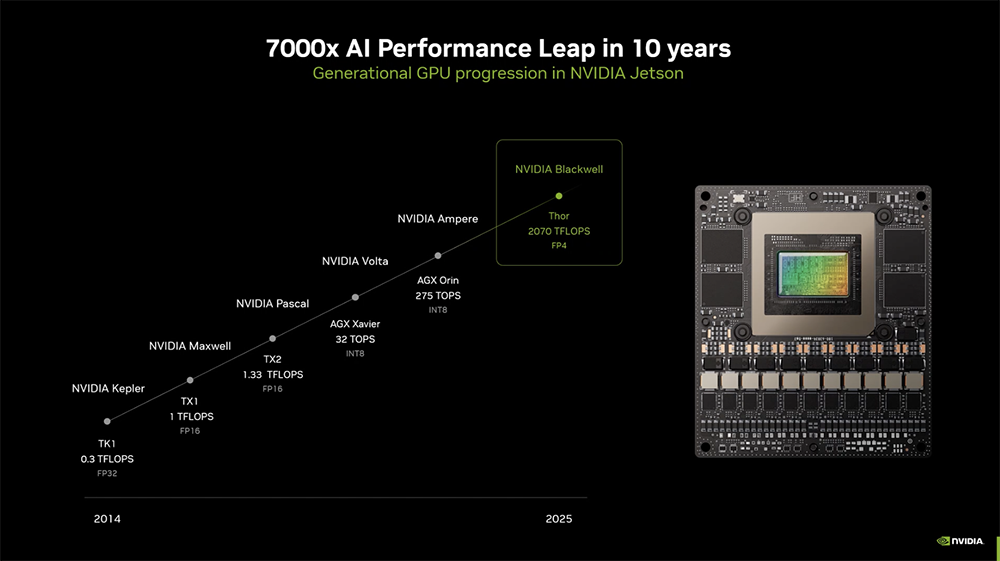
Image source: NVIDIA
This robot computing platform processes high-speed sensor data in real-time, performs visual reasoning on the edge, and runs multiple generative AI models simultaneously on edge devices. This addresses a significant challenge in robot technology: running multiple AI workflows, enabling robots to interact intelligently with humans and the physical world in real-time.
Moreover, Thor can provide the first token response within 200 milliseconds and generate over 25 tokens per second, nearly supporting real-time dialogue between robots and humans.
This signifies that humanoid robots are poised to no longer rely solely on the cloud but can adapt to and complete tasks in complex scenarios on the edge.
Jetson Thor has also invested significantly in software to meet real-time application requirements for low latency and high performance, supporting all mainstream generative AI frameworks and AI inference models, including Cosmos Reason, DeepSeek, Llama, Gemini, Qwen, etc.
In essence, with simultaneous hardware and software upgrades, NVIDIA is not merely installing a chip in a robot but endowing it with a brain capable of real-time interaction and reasoning, all while being swift and stable.
This brain, priced at $3,499 in the US, offers a unit price of $2,999 for purchases of over 1,000 mass production modules. Sales are now open to global customers, including China, with the Chinese price yet to be announced.
Among domestic companies, UBTech, Galaxy General, Unitree, Zhongqing Robotics, and Zhiyuan Robotics have already embraced Jetson Thor. Besides Galaxy General, UBTech has deployed NVIDIA Isaac Sim and Jetson AGX Thor on its new-generation industrial humanoid robot, Walker S2.
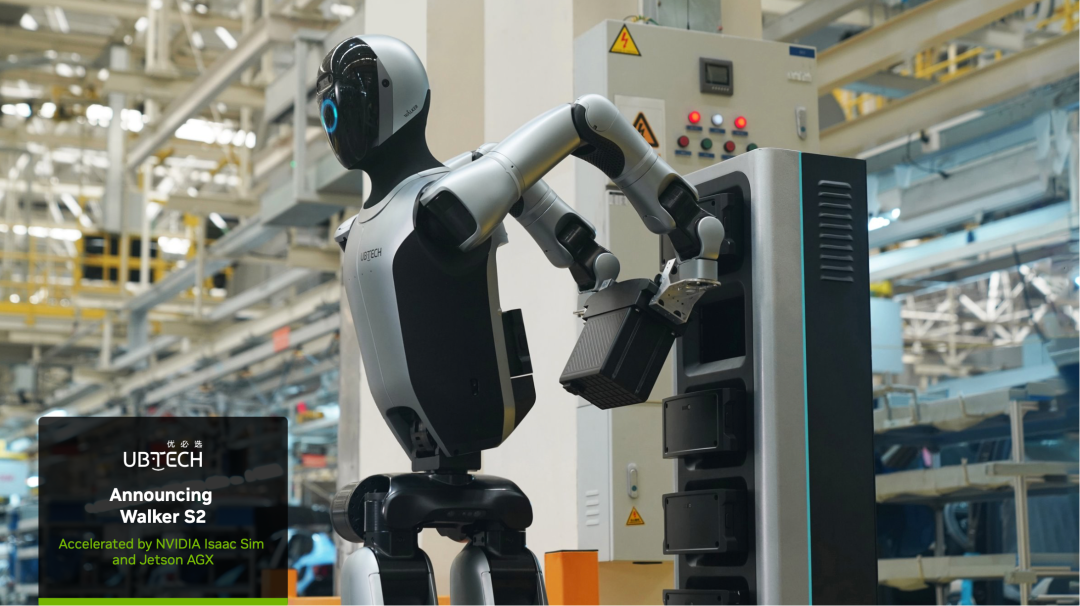
Image source: UBTech
This brain isn't exclusive to humanoid robots. NVIDIA asserts that Jetson Thor is expected to accelerate various robot applications, encompassing surgical assistance robots, intelligent tractors, delivery robots, industrial robotic arms, and visual AI agents.
This reaffirms Jen-Hsun Huang's assertion that every moving object in the future world will be a robot.
Only Big Companies Can Make Brains?
Brains have always been the pinnacle of competition in embodied intelligence.
Without brain capabilities, no matter how advanced the physical structure, it cannot truly integrate into the physical world or interact directly with humans, production, and life. It remains a mere "figurine" rather than a functional tool. However, being at the pinnacle signifies not only value but also difficulty.
While robot bodies can be handmade, crafting a brain involves a leap of several orders of magnitude in difficulty.
This naturally sets a high bar for entering the brain competition, requiring not just technological prowess but also substantial financial support, making the current brain race a "giant's playground." In a previous conversation with the founder of a robot body manufacturer, Embodied Learning mentioned that only well-funded brain enterprises will survive. Another founder echoed this sentiment, believing that large companies will ultimately hold the discourse power in brains due to the current insufficient financial resources of robot body manufacturers to support brain R&D.
On one hand, the high entry threshold makes brains a blue ocean within a blue ocean. On the other hand, creating a superior brain not only circumvents fierce competition at the body level but also promotes industry prosperity and secures future discourse power. Therefore, large companies with existing technological foundations naturally assume the role of brain suppliers.
During the 2025 World Artificial Intelligence Conference, Tencent Robotics X Lab and Foton Lab jointly unveiled the embodied intelligence platform, Tairos. This platform emphasizes "plug-and-play," lowering the barrier to entry for users. It comprises two parts: model algorithms and cloud services. The model layer includes multimodal perception models, large planning models, and joint perception-action large models. The cloud service platform encompasses simulation platforms, data platforms, and development tools.
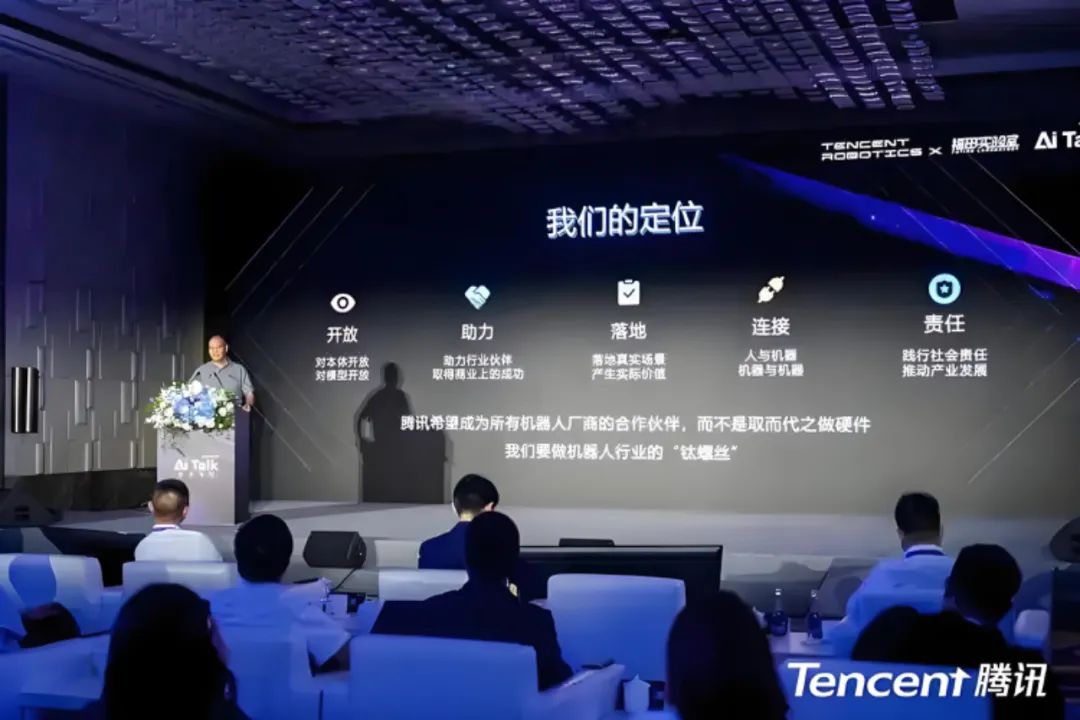
Image source: Tencent
The Unitree robot equipped with Tairos can understand and execute commands like "come to me," see and describe objects on the table, and even possesses temporal and spatial memory, remembering its activities from the previous day.
JD.com primarily provides brains and IO input-output interaction capabilities. IO capabilities encompass speech understanding in complex noisy environments and precise comprehension of children's language expressions. Robots integrated with JoyInside include SenseTime's Yuanluobo AI chess robot, Lingtongnian NIA-F01 humanoid robot, and Zhongqing PM01, among others. With JoyInside's support, robots can engage in natural multi-round dialogues with humans.
It's noteworthy that Tencent and JD.com, who have entered the brain market, haven't displayed overt commercial ambitions. One emphasizes non-commercialization, while the other is indifferent to revenue, fundamentally differing from NVIDIA.
Whether it's the strategic moves of Tencent and JD.com or NVIDIA's near all-in approach towards robots, major companies' involvement in brains is not just a response to the times but also a strategy to seize the initiative and consolidate their role as industry leaders. After all, the potential in this space far surpasses that of making a single robot.
Industry leaders not only sell products but also set benchmarks and cultivate ecosystems, attracting third-party developers and service providers to develop complementary solutions, thereby fostering a robust synergy. Prominent examples include Microsoft's Windows operating system and Apple's App Store.
However, this also demands higher technical standards. Qualified leaders must possess core technologies that competitors cannot replicate in the short term, be it patents, complex algorithms, or unique manufacturing processes. They must maintain forward-looking R&D investments, looking beyond the present and laying the groundwork for the next generation of technologies. While others are still using shovels, they are already developing excavators. Sustained R&D investment is crucial for maintaining a leading position.
From an industrial perspective, body enterprises need the empowerment of large companies to accelerate the transition of robots into productive forces through smarter brains, fostering a mutually beneficial development path. With the collective efforts of multiple participants in different roles, we may be one step closer to universal robot adoption.


